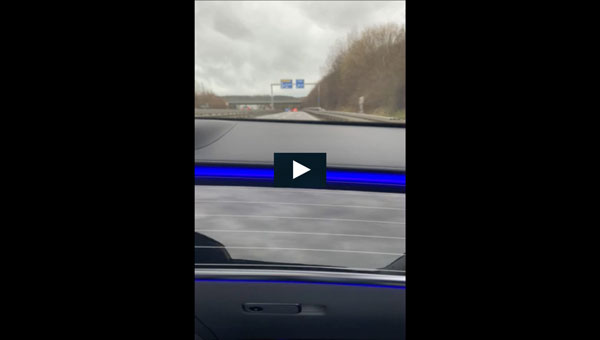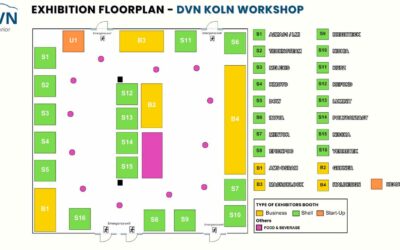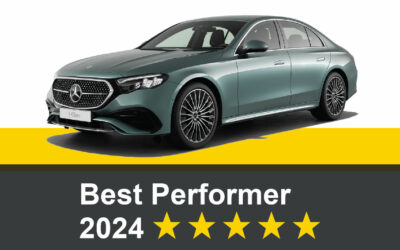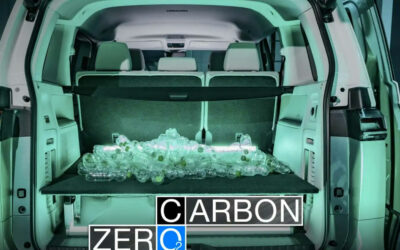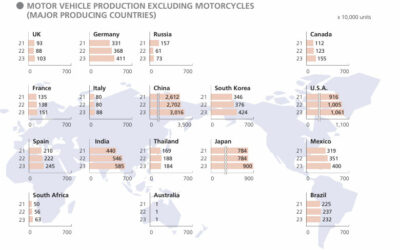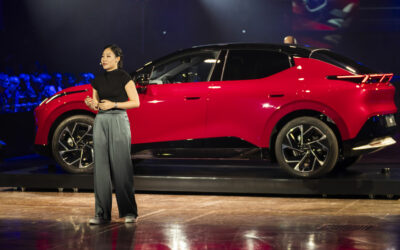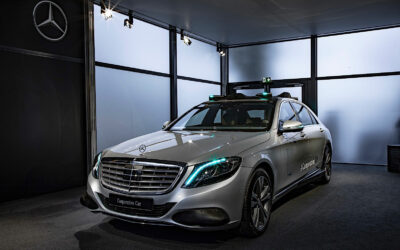After the short introduction of the team and office, with focus on Mercedes-Benz and AMG passenger cars, it did not take us a long time to talk about the major team delivery of the last 10 years—Digital Light. Indeed, Stefan joined the Mercedes lighting team in 2008 and worked most of the time on the intelligent lighting system, including Multibeam LED and digital light.
Since 2008, Mercedes-Benz have developed and commercialized two generations of Digital Light, with Marelli and ZKW. Since 2023, facilitated by regulatory provisions for driver assistance projections, the four legal driver assistance symbols are provided in countries applying UN Regulations 149-01 and 48. Previously, Mercedes used derogation procedures to promote this innovation.
In China, Mercedes is waiting for new regulations to enter force on 1 July this year before they’ll offer driver assistance projections there. But they already have front lit logos on cars like the EQE SUV shown here; that’s already possible within the current regulations, with a symmetrical logo.
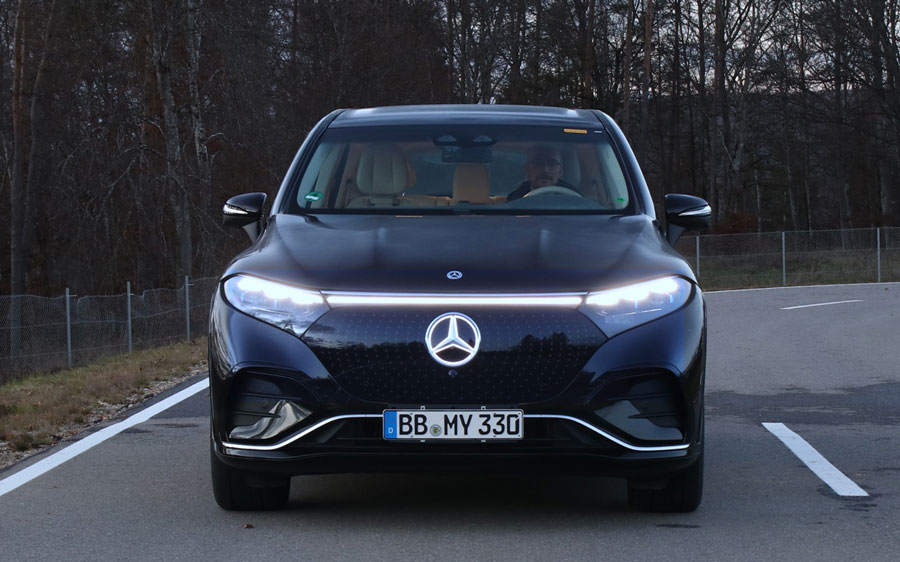
To develop high definition ADB, including driver assistance projection, the Mercedes team have developed a realistic driving simulator with four beamers; it’s technology similar to that in a planetarium. Chassis information is implemented in the driver simulator to provide a realistic experience including rolling and chassis effects. At each moment you can export data to evaluate glare values from the beam at different distances, including chassis data.
As an example, adding light above other traffic participants in ADB mode with the HD system was first tested on the simulator before introduction on vehicles. The Mercedes team needed to recognize vehicle shapes—passenger cars, LCVs, trucks—with available sensors on the cars. especially cameras, which are also trained to take the topography into account.
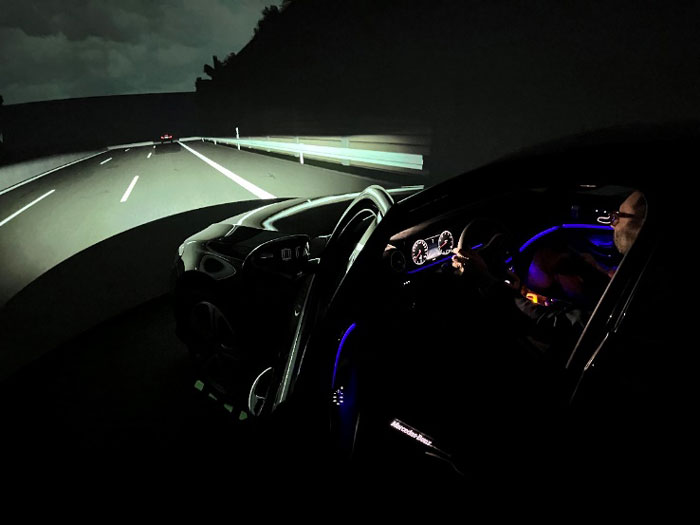
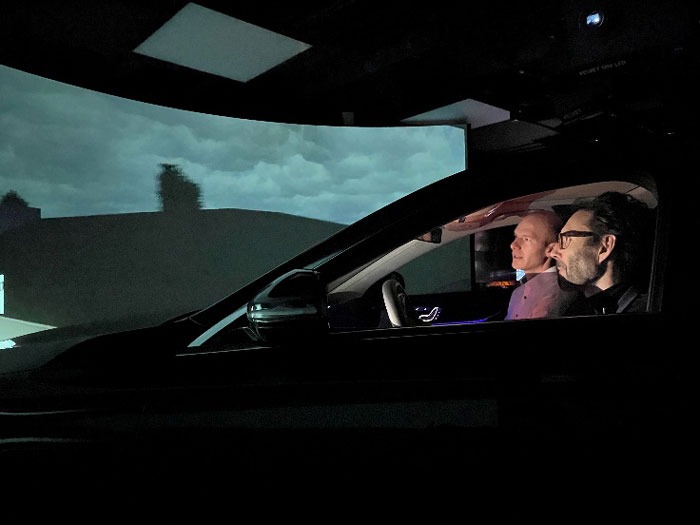
Once we got to the Immendingen proving ground, I took a seat in a Mercedes-Benz S-Class with the L3-capable Drive Pilot system just approved by the German Federal Motor Transport Authority to increase its top operating speed to 95 km/h.
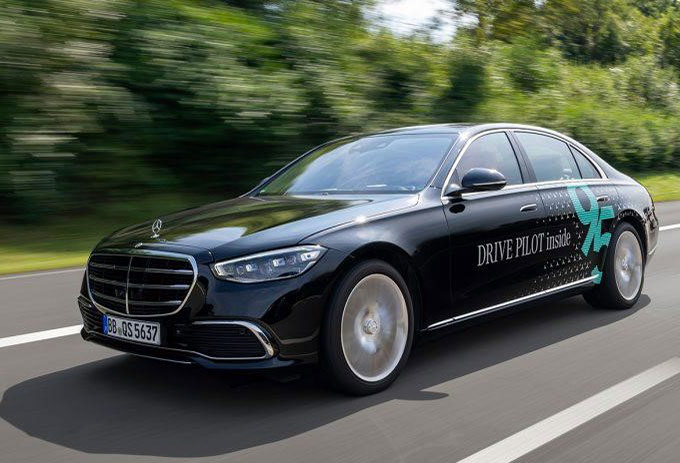
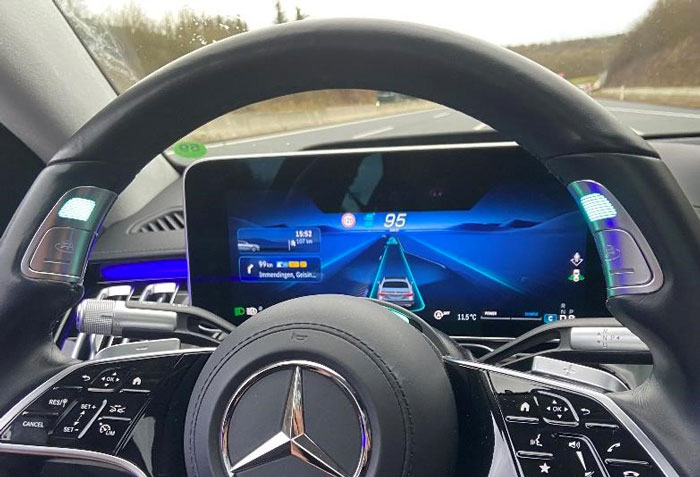
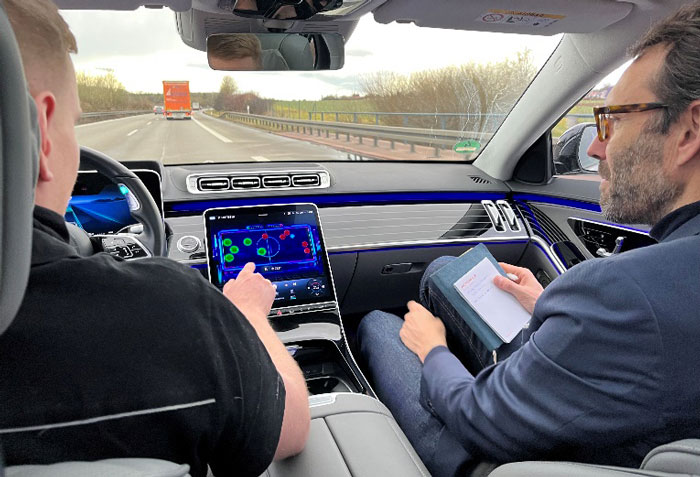
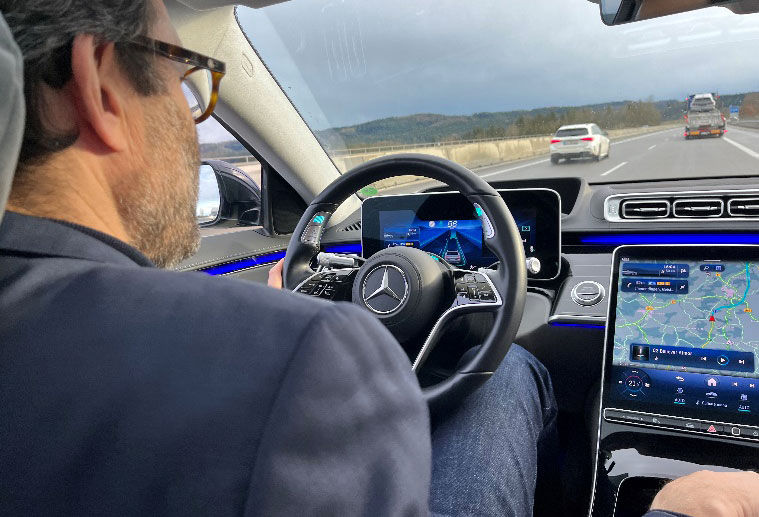
Originally introduced in 2022 with a top speed of 60km/h, this new maximum of 95 marks the next step. The plan is to increase to 130 km/h by the end of this decade. To drive in automode, you have three layers of information—sensor perception including lidar, HD mapping (including V2X communications), and GPS via GNSS on the car’s roof. In addition, there must be a lead vehicle (in this case, the orange truck ahead of me shown here) and the car must be travelling not faster than 95 km/h.
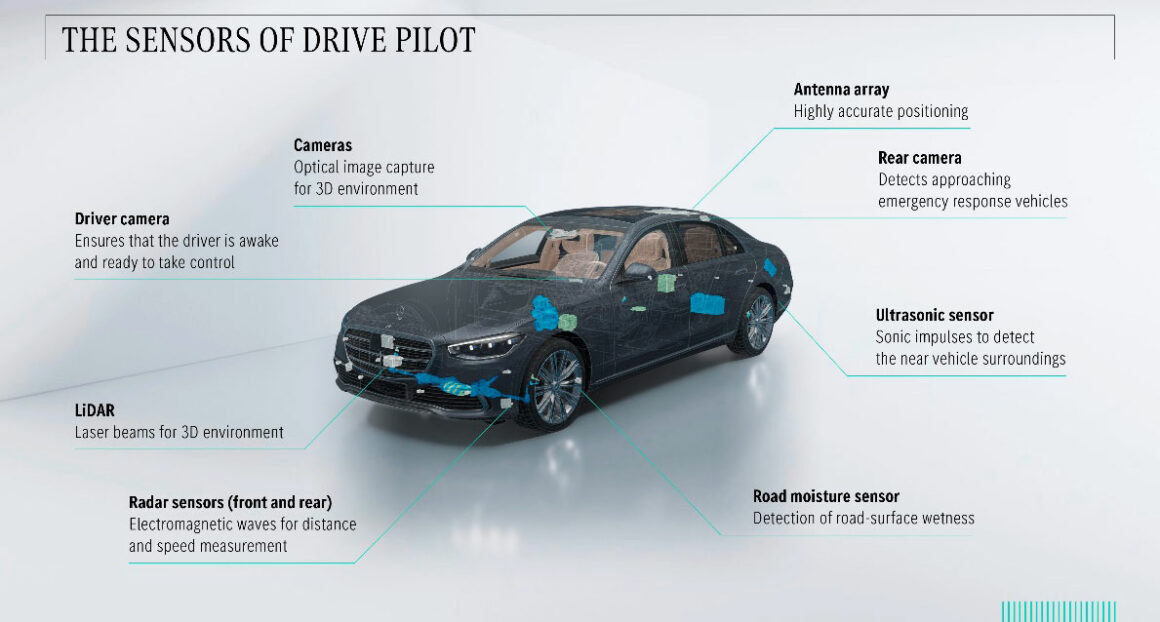
If these conditions are not fulfilled, for example, before entering a tunnel, you will get an alert message like the one shown here: « Suitability of route is ending » in white, followed by a more urgent « Take full control of vehicle! » in red.
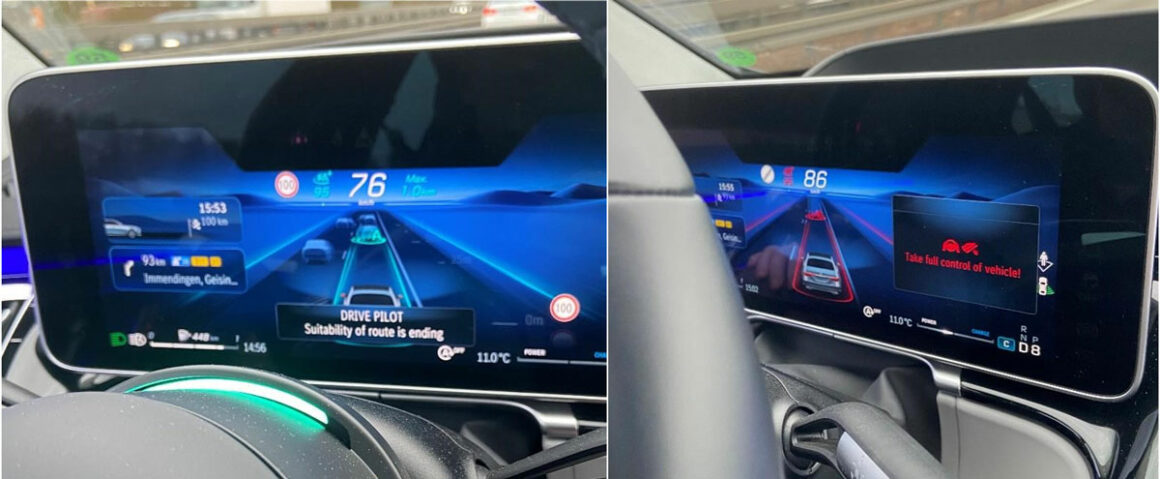
The Mercedes UX team have developed a turquoise interior light on the steering wheel to indicate the automatic operation of the car. The A/C buttons are also lit in turquoise, and the driver cannot turn it off; it is needed for anti-fog in front of the camera. Likewise, the driver cannot manually activate the low beam or rear fog lamp; doing so will disengage the AD mode. This fog information will also be sent on the Car-to-X channel to inform other Mercedes vehicles. The only light control available is the flash to pass in AD mode.
This L3 function is operable in Germany and France, plus the U.S. states of Nevada and California. Local laws have not yet been adjusted to allow it in other European countries. And only testing is possible in China for the moment.
The S-Class was also equipped with a L2+ function with automatic lane-change capability. This is allowed in Europe thanks to a derogation—Commission Delegated Regulation (EU) 2022/2236 of 20 June 2022—even though UN Regulation № 48 has not been yet modified to allow automatic activation of turn indicators; this is an ongoing discussion at GRE.

All L2+ and L3 functions are supported by an AR-HUD (augmented-reality head-up display) which presents information so as to appear on the road 20 metres ahead. This is a terrific feature that really improved the driving experience. Contrast is very high, and it never interfered with my field of view.
Interior lighting is also a big part of the driving experience in the S-Class. Voice recognition is supported, not only by Siri via Apple CarPlay, but also by the interior lighting set up, which looks really great.
All three of the Mercedes models we tested that night have different interior lighting components with different personalization, showing the hard work done by the interior lighting team over the past year.
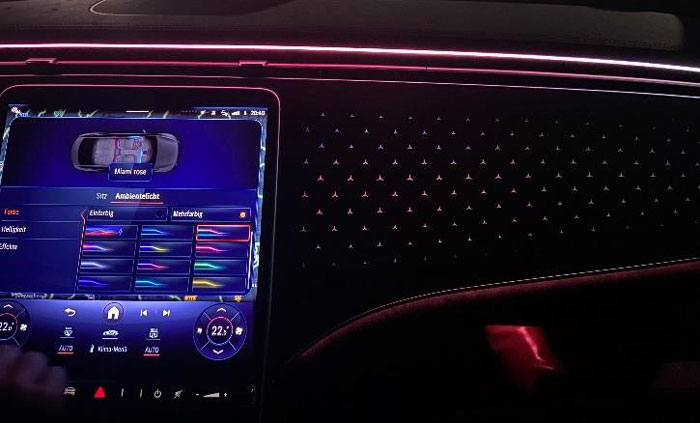
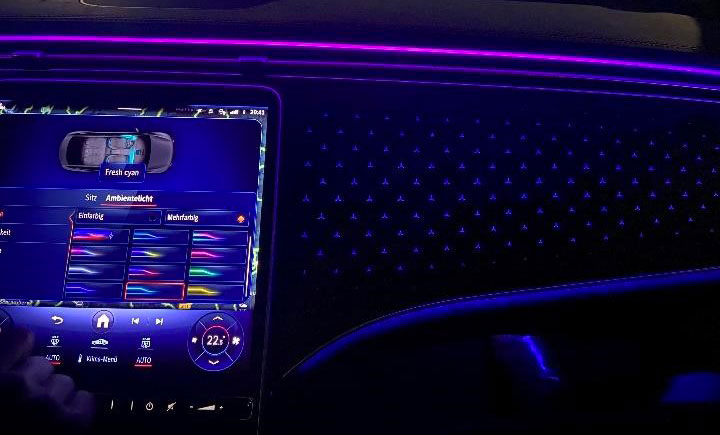
Mercedes-Benz EQE
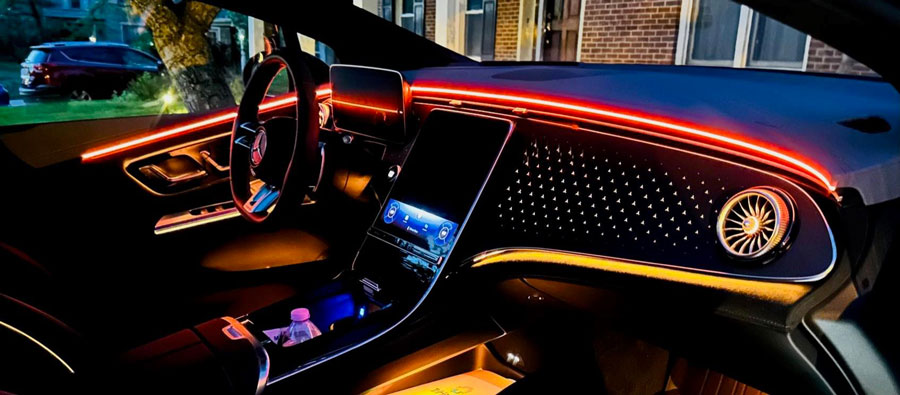
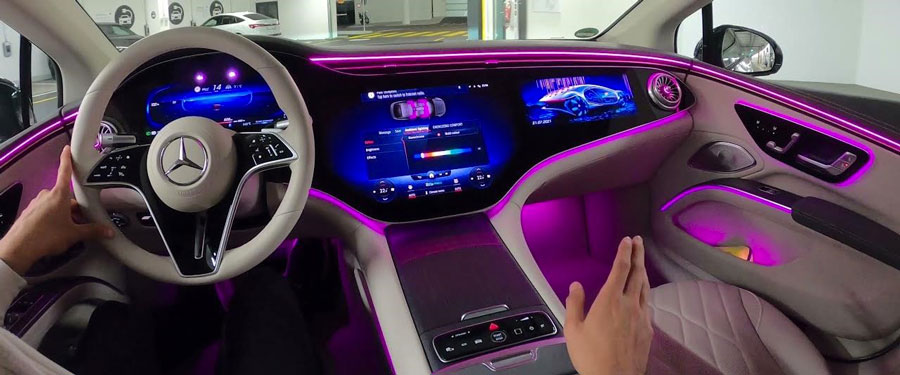
Mercedes-Benz EQS
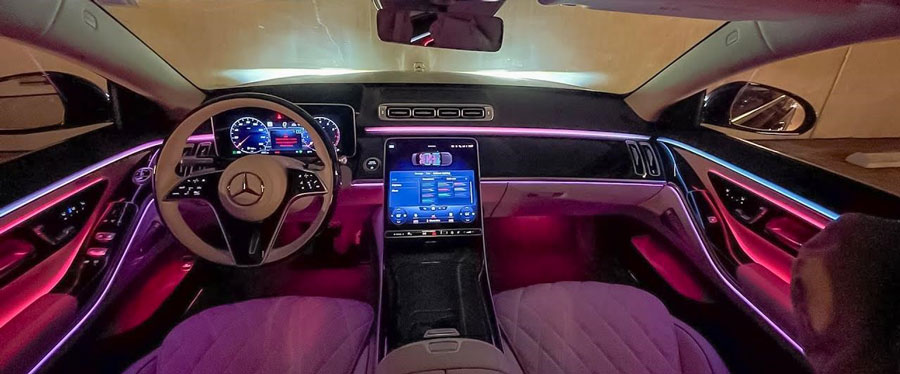
Mercedes-Benz S-Class
After the AD try-out, it was time to arrive back in Immendingen and visit the new Lichtkanal, Mercedes-Benz’s new lighting facility.
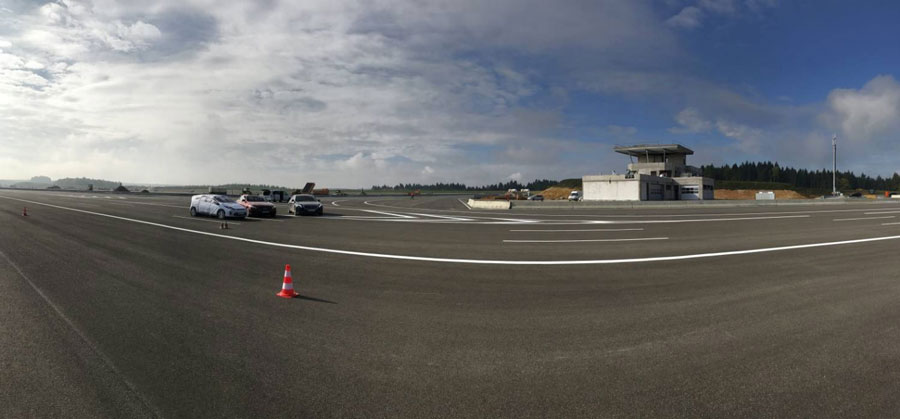
The Immendingen proving ground opened in 2018. It has 55 km of test tracks, with lane markings from seven countries. 400 vehicles can be driven at the same time on the different tracks. All sort of lighting tests, including IIHS and US ADB, can be done.
At this proving ground, there are plans to open a new Lichtkanal, which is the name for the Light Technology Centre. It will be at a whole new level for testing functionality and lighting performance. DVN was able to have a preview of the new location, and we are excited about the official opening later this year (watch for our coverage when it’s time!).
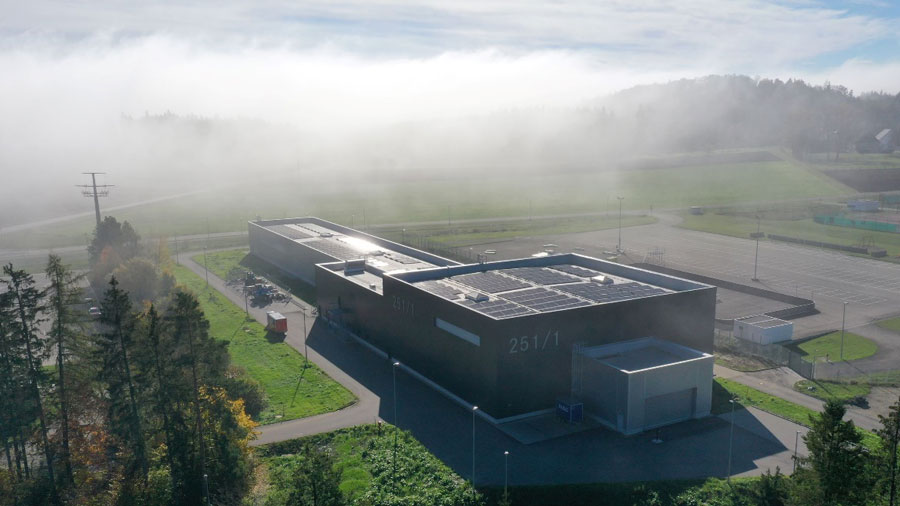
The Mercedes team did a demo of the various welcome functions and driver assistance projections you can get with the Mercedes Me app, including a Valentine’s Day mode available only on 14 February.
All these new app=accessed functions can be downloaded while driving with OTA. However, unlike with some Chinese brands, Mercedes owners cannot create their own signature or welcome. The Mercedes philosophy is to control the technical content.
